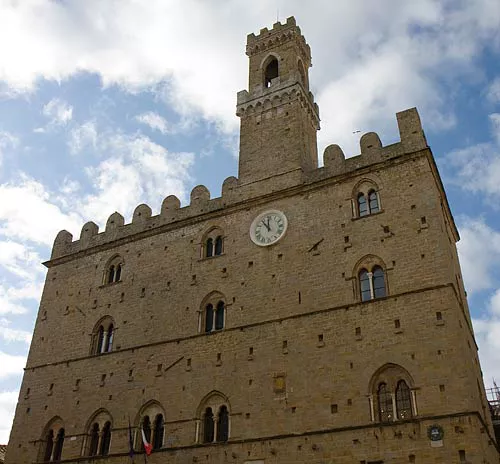1. Introduction to Volterra
Volterra is a walled town in Tuscany boasting medieval and Renaissance architecture, a Roman theater, and Etruscan sites. It stands as one of Tuscany’s most evocative hill towns, typically attracting fewer tourists compared to nearby attractions.
2. Volterra Location
Located in central Tuscany, Volterra is slightly south of San Gimignano and west of Siena. It is approximately 50 kilometers from Florence and just over 200 kilometers from Rome.
3. How to Get to Volterra
To access Volterra, the nearest train station is in Poggibonsi, north of Siena. Visitors can take a train to Poggibonsi, then utilize bus services that connect Volterra with other towns throughout Tuscany. The closest airports include those in Rome, Pisa, and Florence.
4. Where to Stay in Volterra
Here are a couple of great options for accommodation:
- San Lino Hotel is a 4-star establishment housed in a former 15th-century convent within the medieval walls.
- Villa Porta all’Arco offers a 3-star experience just outside one of the town gates, within walking distance to the historic center.
5. Top Sights in Volterra
- Roman Theater, Forum, and Baths: Construction of the Roman Theater commenced in the 1st century BC. Behind it, visitors can explore the remains of Roman baths from the 4th century AD, along with remnants of the Roman forum. These sites were buried during the Middle Ages and excavated beginning in 1951.
- Piazza dei Priori: This main square is noted as one of the most impressive in Tuscany. It features the 13th-century Palazzo dei Priori, the oldest town hall in the region. The square is also home to the 14th-century Palazzo Vescovile and the back of the cathedral.
- Cathedral and Baptistry: The duomo, or cathedral, was constructed in 1120 at the site of a previous church. With a Romanesque facade and a 13th-century entrance, its interior was modified in the late 16th century, showcasing a richly decorated ceiling, numerous chapels, and a 12th-century marble pulpit. The octagonal Baptistery, which possibly features older elements, dates back to the 13th century with a facade adorned in green and white marble stripes.
- Medieval Wall and Gates: The historic center is enclosed by 13th-century walls, featuring six gates dating from the 13th to 16th centuries. Porta San Francesco retains traces of original frescoes, while Porta San Felice offers views of the surrounding countryside. The area also preserves two ancient fonts, including Fonte di Docciola, which historically provided water for mills and the wool industry.
- Etruscan Sites: The highest point in Volterra features an Etruscan acropolis with panoramic views of the landscape. This archaeological site includes foundations of two Etruscan temples, Hellenistic dwellings, a system of cisterns, and ruins of medieval towers. The Porta All’Arco, or the Arch gate, has sections that may date back to the 5th century BC, with the arch and heads tracing back to the 3rd and 2nd centuries BC. Etruscan tombs can be found carved into sandstone at several locations.
- Museums: The Guarnacci Etruscan Museum, established in 1761, is among Europe’s earliest public museums, displaying a vast collection of artifacts in the 13th-century Palazzo dei Priori. The Civic Museum and Art Gallery, which includes paintings from medieval to modern eras, is located in the 15th-century Palazzo Minucci-Solaini. A Museum of Sacred Art is situated in the Bishop’s Palace.
- Medicea Fortress: Positioned atop a hill, this fortress comprises the Rocca Antica and the Rocca Nuova.
6. Twilight Saga New Moon in Volterra
Volterra serves as the home of the Volturi in the New Moon book, the second installment of the Twilight series, with pivotal action occurring here. While the film adaptation of Twilight Saga: New Moon is set in Volterra, it was actually filmed in another town.





